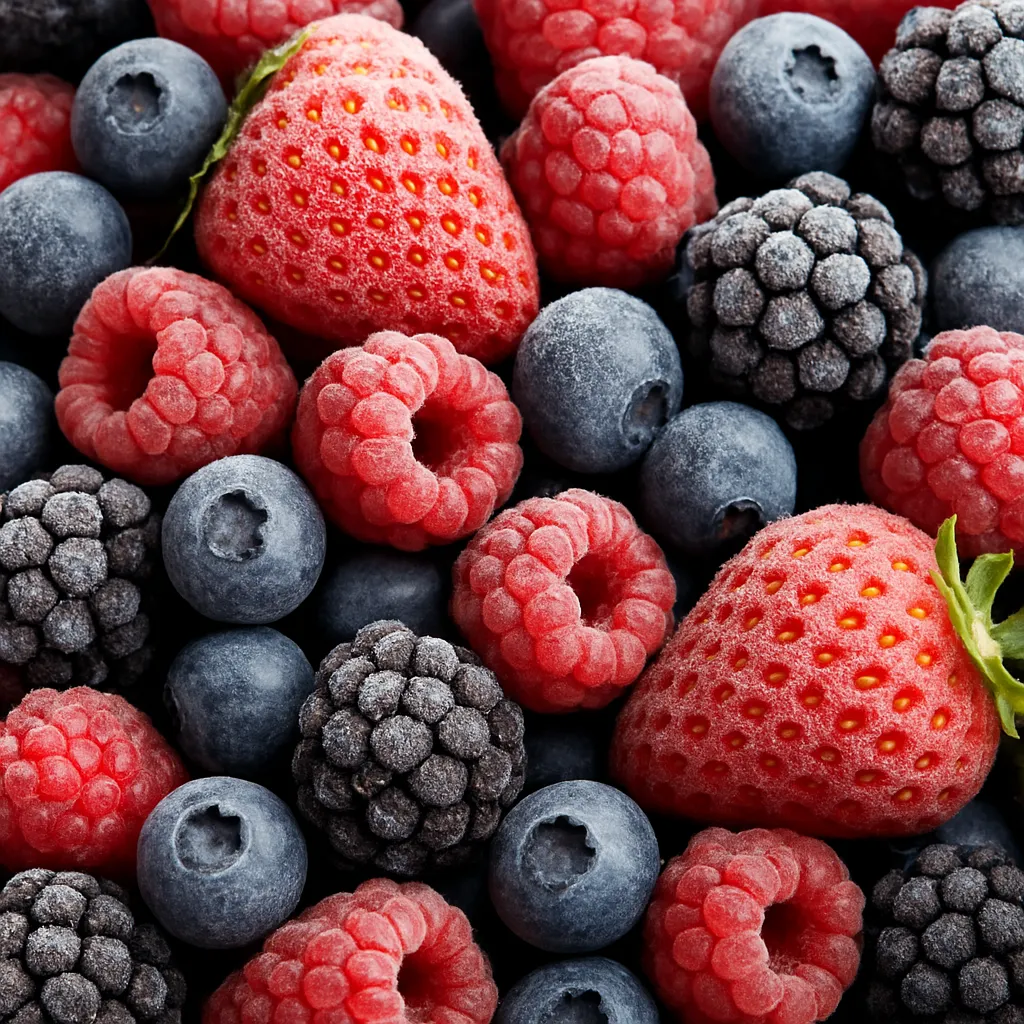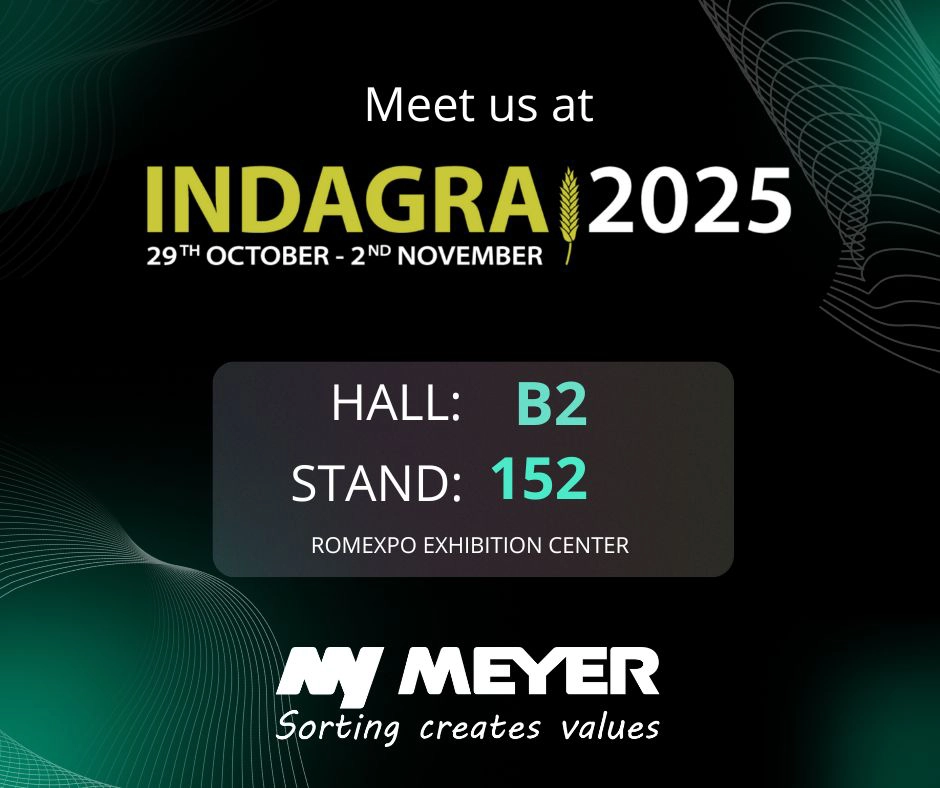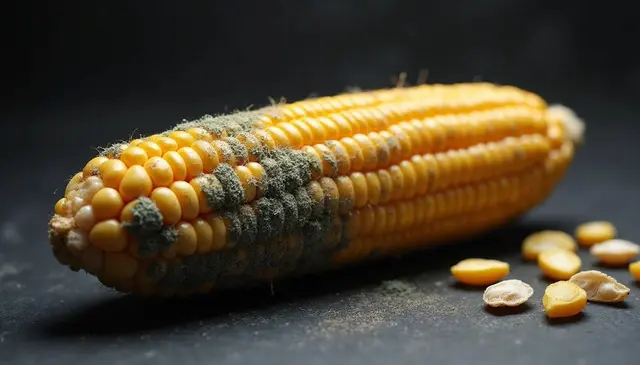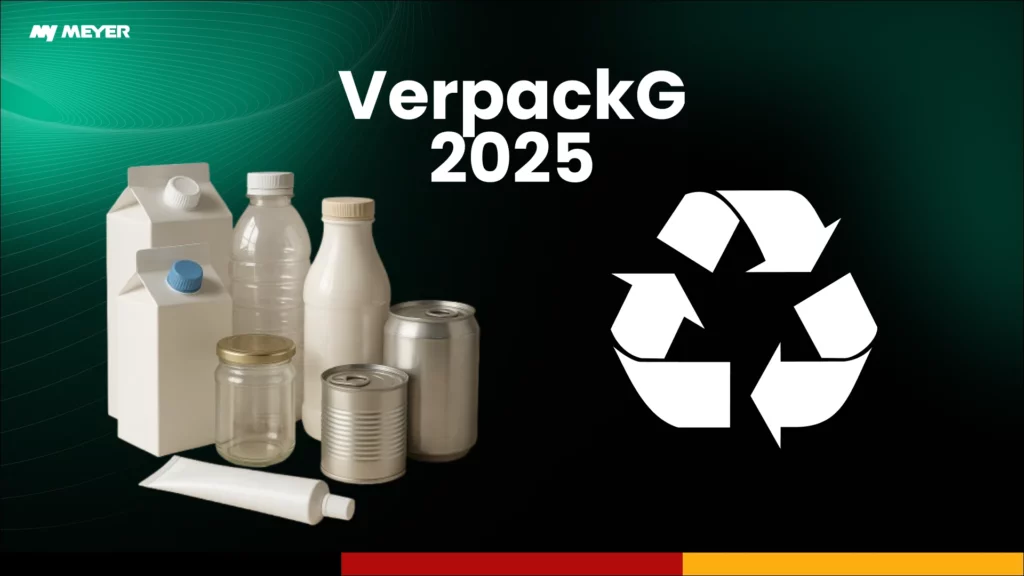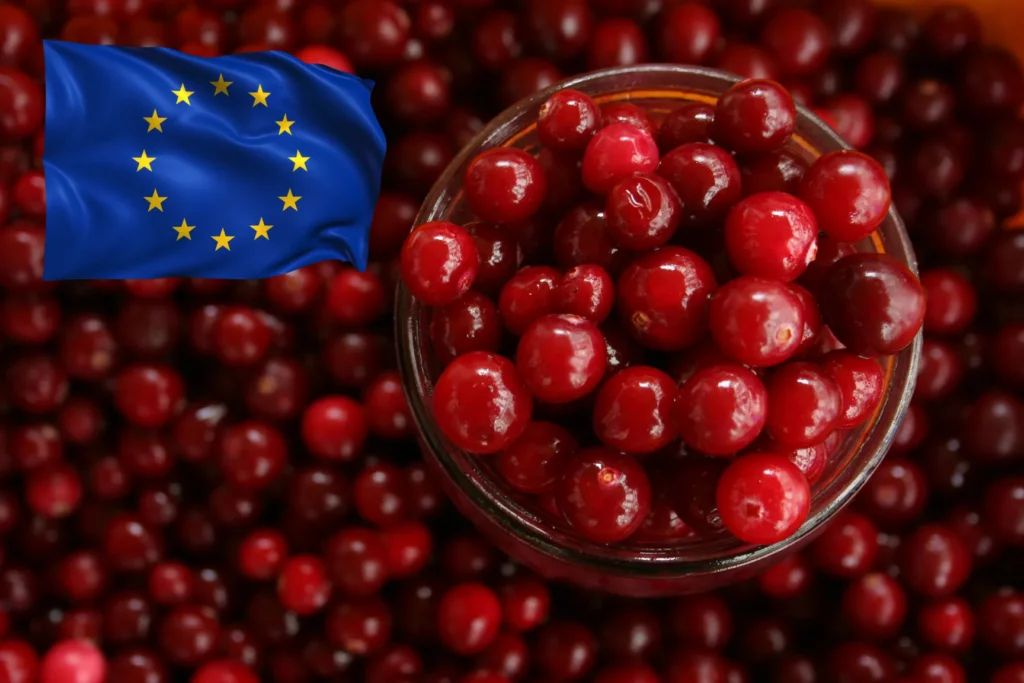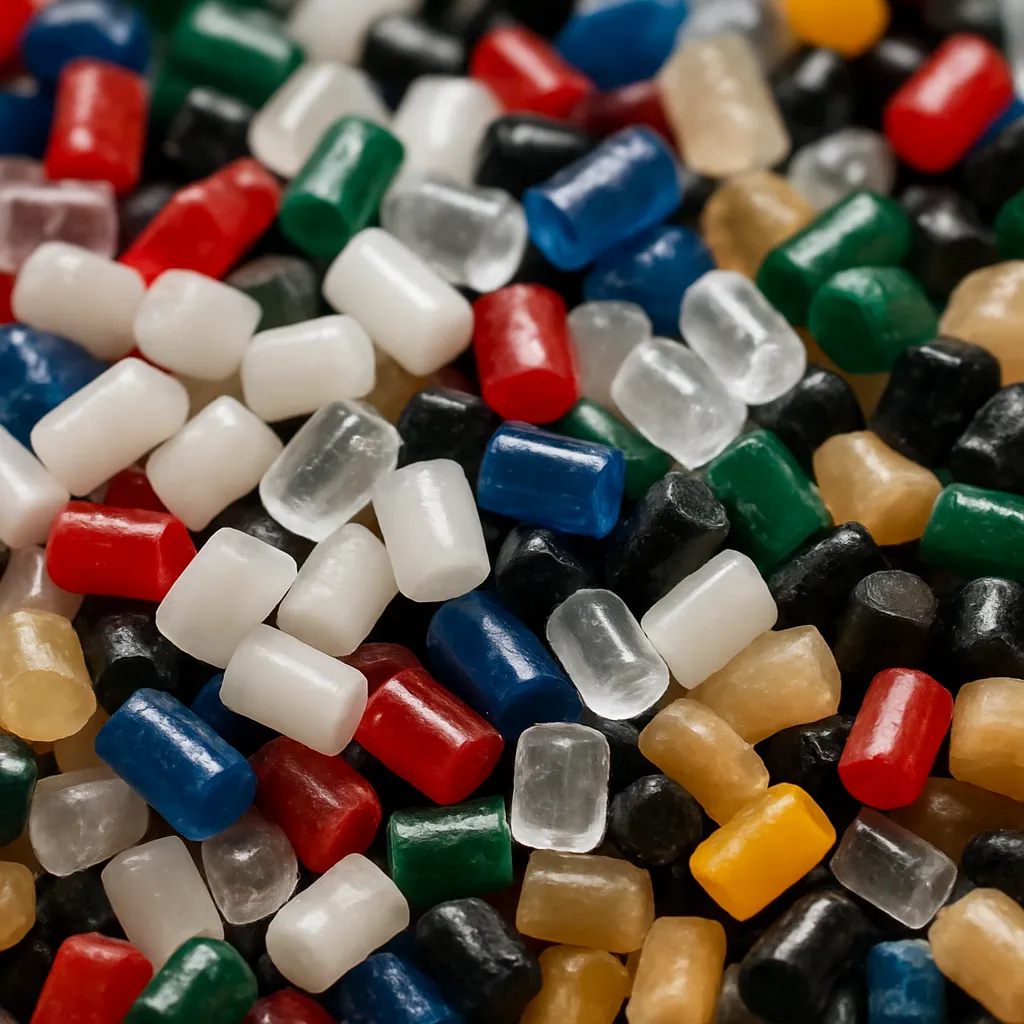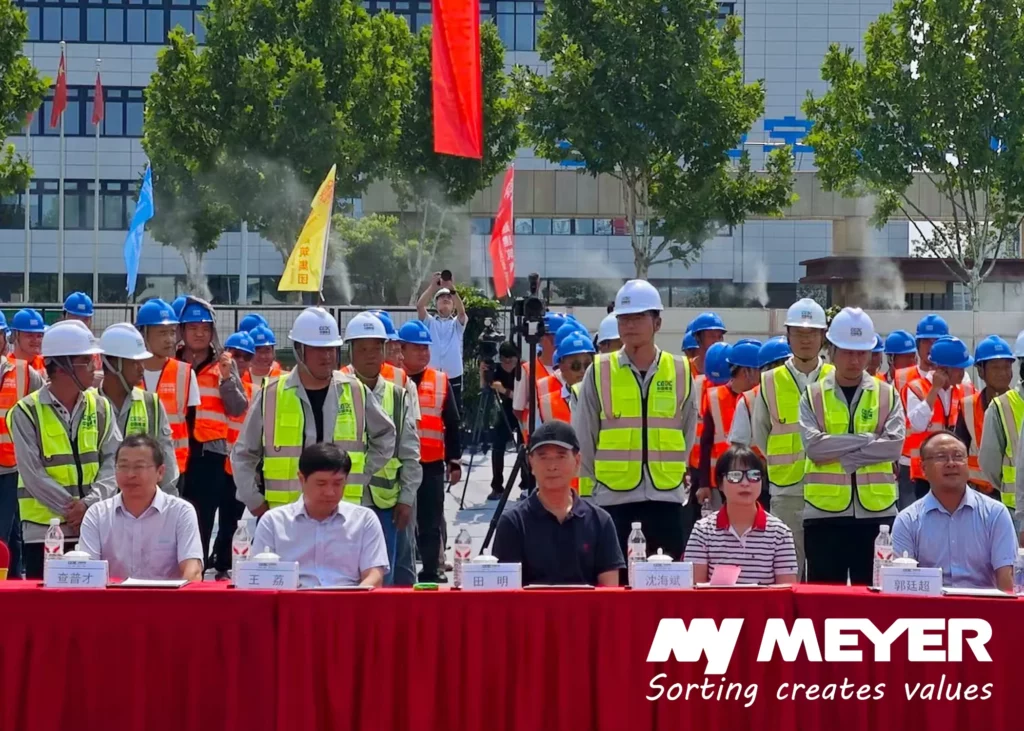The Unique Challenges of Frozen Berry Processing
Frozen berries present specific sorting challenges that conventional methods struggle to address effectively:
- Temperature sensitivity: Berries must remain frozen throughout processing to prevent thawing, refreezing, and quality degradation
- Frost formation: Ice crystals can confuse optical systems and affect sorting accuracy
- Delicate product handling: Frozen berries are brittle and susceptible to breakage during processing
- Color variations: Natural color differences must be distinguished from actual defects
- High throughput requirements: Processors need solutions that maintain production speeds even in cold environments
These challenges require specialized sorting technology designed specifically for the frozen food sector.
Advanced Optical Sorting Technology for Cold Environments
Modern optical sorters designed for frozen berry applications incorporate several key innovations:
Cold-Environment Compatible Hardware
Today’s advanced sorting systems feature components specifically engineered for reliable operation in sub-zero temperatures:
- Enclosed systems with temperature control to prevent condensation on optical components
- Cold-resistant materials that maintain structural integrity and functionality
- Specialized ejection systems designed to operate reliably in freezing conditions
- Streamlined designs that minimize surface area where frost might accumulate
Multi-Spectral Imaging Technology
The most effective frozen berry sorters employ sophisticated detection systems including:
- Visible spectrum cameras: Identifying color defects, foreign material, and obvious contaminants
- Near-infrared (NIR) technology: Detecting subtle composition differences invisible to the human eye
- Ultraviolet (UV) detection: Identifying mold and other contaminants that fluoresce under UV light
These complementary technologies work together to create comprehensive detection capabilities even under challenging frozen conditions.
AI-Powered Defect Recognition
Artificial intelligence has dramatically improved sorting accuracy for frozen berries through:
- Deep learning algorithms: Systems trained on thousands of berry images to recognize defects with human-like discernment
- Pattern recognition: Identifying subtle variations that indicate quality issues
- Adaptive programming: Continually refining sorting parameters based on actual processing conditions
- Product-specific calibration: Custom settings for different berry varieties (strawberries, blueberries, raspberries, etc.)
This intelligent approach allows processors to customize detection parameters based on product specifications and customer requirements.
Gentle Handling Systems for Fragile Frozen Products
Preserving product integrity remains essential when processing frozen berries:
- Smooth transitions between processing stages minimize breakage
- Precision air ejection systems remove defects without damaging surrounding acceptable product
- Optimized belt speeds and product distribution prevent crushing and product damage
- Special food-grade surfaces reduce friction and potential for product degradation
Real-Time Monitoring and Process Integration for Frozen Berry Operations
Advanced frozen berry sorting systems incorporate sophisticated monitoring capabilities specifically designed for the unique challenges of cold processing environments:
- Berry-specific defect tracking: Specialized metrics for common berry defects including frost damage, dehydration, color inconsistencies, and partial thawing indicators. These systems can distinguish between naturally occurring variations (like the white bloom on blueberries) and actual quality issues.
- Cold environment performance monitoring: Continuous tracking of crucial parameters like clarity of optical sorter windows, detection accuracy under fluctuating frost conditions, and system temperature regulation to prevent condensation.
- Thermal stress alerts: Intelligent systems that detect patterns indicating potential thermal fluctuations that could compromise product integrity, triggering alarms before quality issues develop.
- IQF (Individual Quick Frozen) integrity metrics: Specialized monitoring for clumping tendencies, which are particularly problematic with raspberries and blackberries that can partially thaw and refreeze during processing.
- Integrated cold chain analytics: Synchronization with upstream freezing tunnels and downstream packaging systems to maintain consistent temperature profiles throughout production.
- Low-temperature calibration tracking: Systems that automatically compensate for optical and mechanical variations that occur uniquely in sub-zero environments, maintaining sorting accuracy despite challenging conditions.
- Remote diagnostics with thermal mapping: Advanced visualization tools that represent the temperature gradients across the sorting system, identifying potential problem areas before they affect production.
Economic Benefits of Advanced Optical Sorting for Frozen Berries
Implementing specialized optical sorting for frozen berries delivers quantifiable economic advantages specific to this challenging product category:
- Cold labor reduction: Decreases the need for manual inspection in harsh freezing environments, reducing labor costs while improving worker comfort and safety. Studies show up to 80% reduction in manual inspection needs for frozen berries.
- Frost damage filtration: Precisely identifies and removes berries damaged by freezer burn or inconsistent freezing, reducing customer complaints by up to 70% according to processor case studies.
- Contamination detection in frozen state: Identifies foreign material like stems, leaves, and packaging fragments that become particularly brittle and problematic in frozen products. This detection capability typically improves removal rates by 35-45% compared to conventional sorting.
- Rapid variety changeover: Specialized preset algorithms for different berry types (strawberries, blueberries, raspberries, blackberries, mixed berries) reduce transition times between product runs by up to 75%, maximizing production flexibility.
- Yield optimization in cold processing: Advanced systems can recover 2-4% more acceptable product compared to traditional sorting methods by reducing false rejects of good frozen berries that may simply have atypical appearance due to frost coverage or natural variation.
- Cold storage inventory reduction: More efficient processing reduces the need for intermediate storage of partially processed berries, lowering cold storage costs that can exceed $0.40 per cubic foot per month.
- Premium market qualification: Consistent removal of off-color, dehydrated, or damaged berries enables processors to meet the exacting specifications of premium markets, commanding price premiums of 15-20%.
Future Developments in Frozen Berry Sorting Technology
The frozen berry sorting sector is advancing rapidly with several emerging technologies specifically addressing the unique challenges of these products:
- Cryogenic-compatible hyperspectral imaging: Next-generation systems operating across 400-2500nm wavelengths that can maintain calibration accuracy even at subzero temperatures, detecting subtle chemical changes invisible to current systems.
- 3D frost mapping technology: Advanced topographical scanning that distinguishes between actual berry surfaces and frost accumulation, preventing false rejects due to temporary ice crystal formation.
- Thermal transition detection: Emerging systems that can identify berries that have undergone partial thawing and refreezing during processing, a critical quality factor that current visual systems cannot reliably detect.
- Molecular fingerprinting for variety authentication: Specialized optical technologies that can verify specific berry varieties (e.g., distinguishing standard blueberries from premium varieties like Bluecrop or Duke) even in the frozen state.
- Continuous-flow deep freezing integration: Direct coupling of sorting systems with IQF freezing tunnels, eliminating temperature fluctuations between processing steps.
- Crystalline structure assessment: Experimental technologies that evaluate the quality of freezing by examining ice crystal formation patterns within berries, predictive of texture quality after thawing.
- High speed delicate handling: Next-generation belt designs with super-cooling capabilities that maintain product temperature while enabling sorting speeds up to 0,5 – 6 tons per hour for even the most delicate frozen berries like raspberries.
- AI-driven seasonal variation compensation: Self-adjusting algorithms that account for growing season variations affecting size, color, and defect patterns across harvest years.
Selecting the Right Frozen Berry Optical Sorting Solution
When evaluating specialized optical sorting equipment for frozen berry applications, processors should consider these critical factors unique to this challenging product category:
- Sub-zero certification: Verification that all system components are rated for continuous operation at low temperatures without performance degradation.
- Berry-specific experience: Documented success sorting the specific berry varieties processed, as each presents unique challenges (e.g., blueberries’ waxy bloom can confuse some optical systems, while raspberries’ hollow core structure requires specialized handling).
- Frost management systems: Specialized defrosting cycles or anti-frost technologies that prevent the gradual degradation of optical accuracy due to condensation or ice buildup. This should include heated optical windows and controlled airflow designs.
- Cold chain preservation: Evaluation of the sorter’s thermal footprint and its impact on maintaining consistent product temperature. Some systems can cause up to 2,8Cof product warming during processing—enough to affect quality.
- Fragility handling at low temperatures: Specialized conveying and rejection systems designed for the extreme brittleness of frozen berries, which can shatter like glass if improperly handled at low temperatures.
- IQF-specific rejection precision: Ejection systems calibrated for the unique mass and aerodynamics of frozen berries, preventing cluster rejection where good product is removed along with defects.
- Cold environment user interface: Controls and interfaces designed for use by operators wearing insulated gloves in cold processing areas, with appropriate display technologies that remain responsive in low temperatures.
- Low-temperature sanitation compatibility: Construction materials and design that accommodate cleaning protocols specific to frozen food processing
Conclusion
Advanced optical sorting technology provides frozen berry processors with powerful tools to maintain product quality, improve operational efficiency, and meet increasingly stringent food safety requirements. By implementing systems specifically designed for cold environment challenges, processors can ensure their products meet the highest standards while optimizing production costs and throughput.
As consumer demand for premium frozen berries continues to grow, processors who invest in advanced optical sorting technology position themselves for competitive advantage in this challenging but rewarding market segment.
References
- International Journal of Food Science & Technology. “Advances in non-destructive quality assessment of fruits and vegetables.” 2022.
- Food Quality and Safety Journal. “Application of machine vision in food industry.” 2023.
- Journal of Food Engineering. “Hyperspectral imaging applications in the fruit and vegetable processing industry.” 2021.
- Food Control Journal. “Foreign object detection technologies in food processing.” 2023.
- American Frozen Food Institute. “Best Practices for Frozen Food Processing.” 2022.
- Journal of Food Process Engineering. “Cold chain management technologies for quality preservation.” 2023.
- Agricultural and Food Science. “Impact of sorting technologies on food waste reduction.” 2022.
- Food Research International. “Deep learning approaches for food quality assessment.” 2023.
